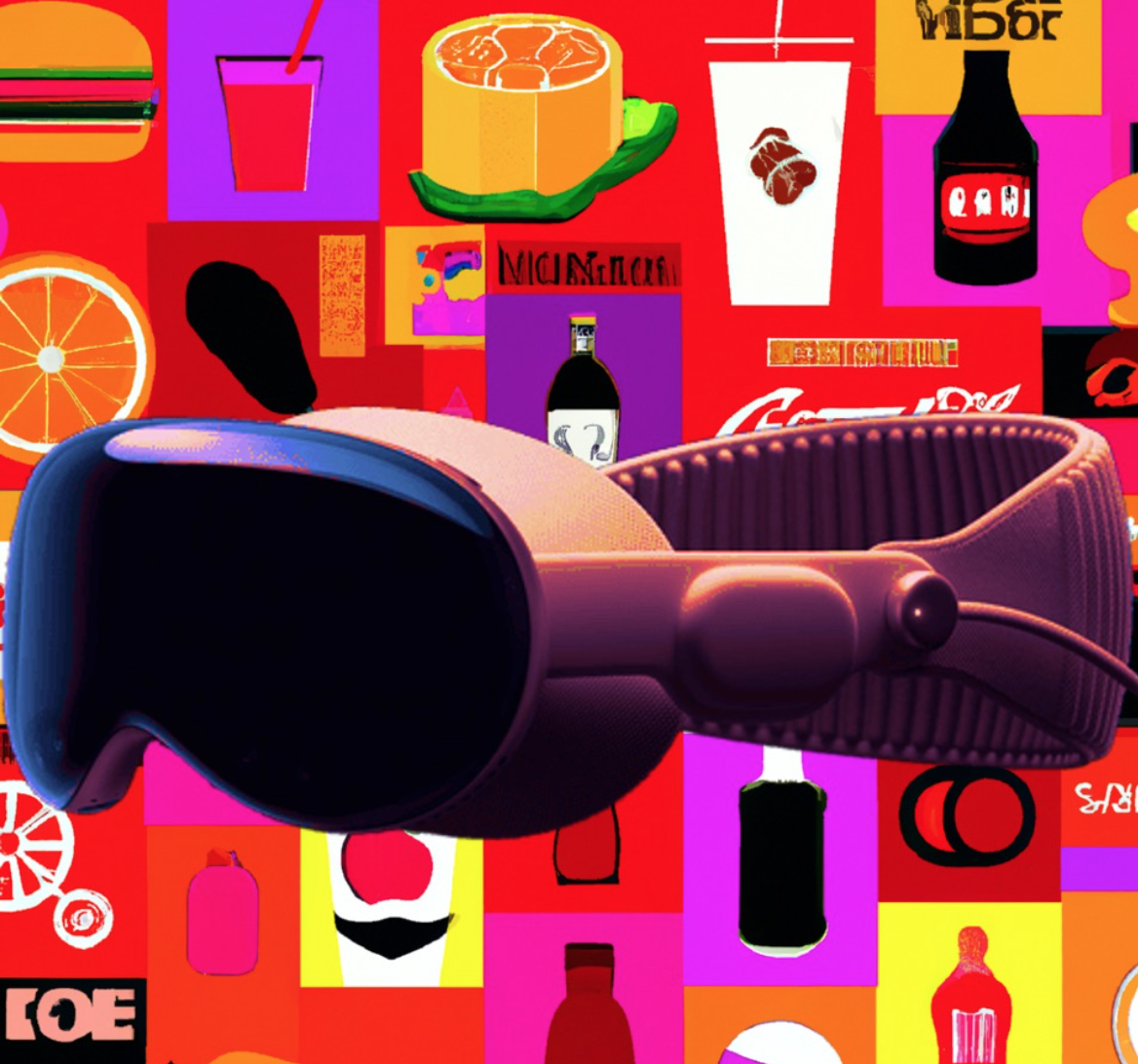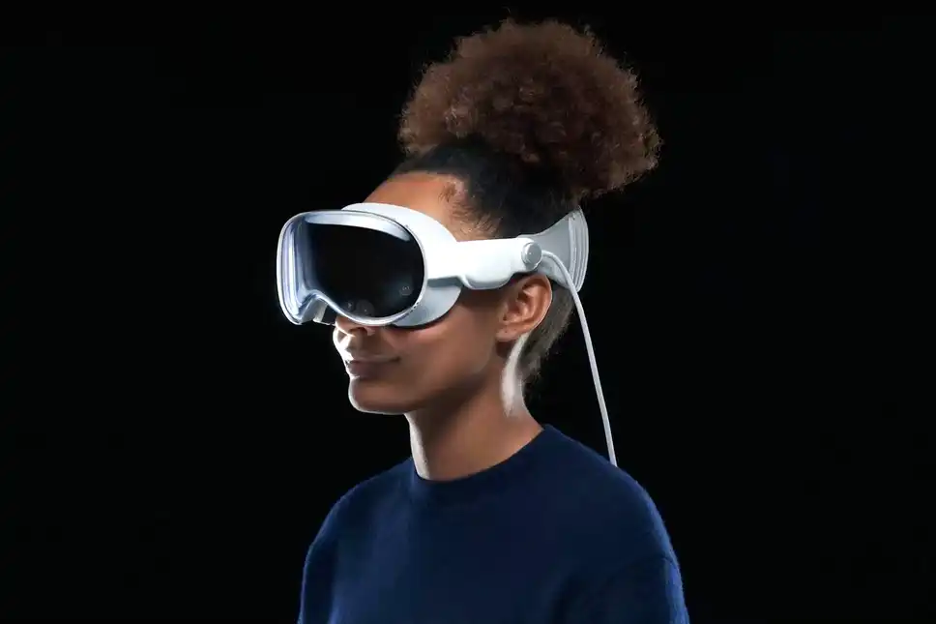
Apple May Finally Make Immersive Marketing A Reality
New device could be a game-changer for AR/VR and the future of marketing.
You have to give it to Apple. Over the years, they have proven their ability to excite and energize the marketplace with transformative products unlike any other company. And it looks like they did it again.
Apple recently announced that it will be launching a new product early next year; a wearable “spacial computing” device called Vision Pro. Of course, augmented reality and virtual reality have been tackled by numerous manufacturers and Apple will face competition from Microsoft HoloLens, Meta Quest, HTC Vive and others. However, Vision Pro promises to be a more feature-rich, more comfortable and more versatile device that has the potential to revolutionize how we interact with computers and the world around us – in a way that only Apple seems capable of achieving.
Here are some of the key features of Vision Pro:
Vision Pro has a high-resolution display that provides a clear and immersive viewing experience – beaming images in 12 milliseconds, which is eight times faster than the blink of an eye. This is important for tasks such as watching videos, playing games, or working on projects.
Vision Pro uses eye tracking to track the user’s gaze and adjust the view of the virtual environment. This makes it possible for users to interact with virtual objects in a more natural way, such as by looking at them to select them or by moving their gaze to scroll through a list of options.
Vision Pro uses hand gesture recognition to allow users to interact with virtual objects by using their hands. This can be used for tasks such as controlling a virtual character, manipulating objects, or drawing in a virtual space.
Vision Pro features passthrough AR, which allows users to see the real world overlaid with virtual objects. This can be used for tasks such as navigation, augmented reality gaming, or even just seeing what’s around you in a more immersive way.
Vision Pro uses realistic face rendering to show others a lifelike version of your face in video calls. This can make video calls using Vision Pro feel more natural and engaging.

Vision Pro has high-quality sound that provides a clear and immersive audio experience. This is important for tasks such as watching movies, listening to music, or playing games.
Vision Pro is designed to be comfortable to wear, even for extended periods of time. This is important for tasks such as gaming or working on projects.
Vision Pro can last for several hours on a single charge or plug into a power outlet for endless use. This is important for using Vision Pro in a variety of settings.
It is still early days for Vision Pro. The product will be expensive at launch and it may take several years to gain traction among consumers. But it’s not difficult to see how Apple could pull way ahead of the pack when it launches next year with its Vison OS and a slate of third-party applications as part of a whole new ecosystem. Apple is making a huge wager that Vision Pro has the potential to change the way we live and work.
Of course, one of the most exciting things we find about Vision Pro is its potential for use in marketing and advertising. The device’s immersive capabilities could be used to create virtual product demonstrations, interactive brand experiences, personalized advertising and more — opening a new channel of communications called Immersive Marketing.
Just imagine the exciting opportunities that Vision Pro and Immersive Marketing represents for businesses:
A car company could use Vision Pro’s eye tracking to follow the customer’s gaze and adjust the view of the car from all angles. They could also use hand gesture recognition to allow customers to interact with the car’s features, such as turning on the radio or adjusting the climate control.
A food company could use Vision Pro’s high-resolution display to show customers close-up views of the food they are preparing with their products in real time.
A travel destination could use Vision Pro’s passthrough AR to overlay virtual objects, such as historic landmarks and structures, on top of modern settings. This would allow customers to get a better sense of a destination’s history and culture.
A home improvement store could use Vision Pro’s eye tracking and hand gesture recognition to allow customers to interact with products, such as placing them in different rooms or changing their colors.
A cosmetics company could use Vision Pro’s high-resolution display and realistic face rendering to show customers close-up views of different makeup looks.
A clothing company could use Vision Pro’s AR rendering and hand gesture recognition to allow customers to try on clothes or change their colors and materials.
A sporting goods company could use Vision Pro’s passthrough AR to overlay virtual objects, such as targets or obstacles, on top of real-world objects. This would allow customers to demo products in a more realistic and challenging environment.
A museum could use Vision Pro’s passthrough AR to overlay virtual objects, such as historical artifacts or interactive displays, on top of real-world objects. This would allow visitors to learn about different cultures and time periods in a more engaging and immersive way.
A furniture company could use Vision Pro to create a virtual showroom where customers can walk around and interact with different pieces of furniture and then transport them to their own homes and view them in different colors and finishes.
Overall, Vision Pro has the potential to revolutionize the way businesses market and advertise their products and services by providing more immersive, personalized, contextual, and interactive experiences – helping businesses to connect with customers on a much deeper level.
It will be thrilling to witness the impact of Vision Pro and similar products on the marketing and advertising landscape in the years to come.



